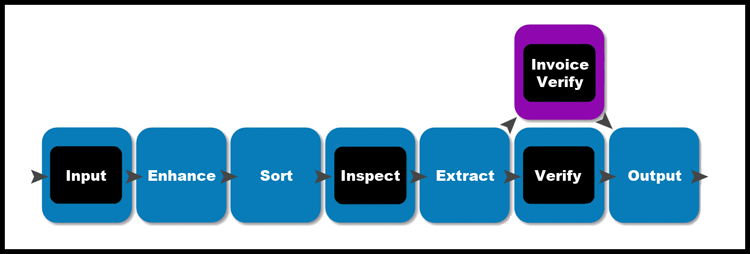Document flow: Overview
DOCUMENTS API Help contains a link to this topic.
All documents follow a certain flow through the system, where various statuses are assigned to them depending on where they are in the flow and how they need to be processed.

Stage 1: Input
This is where the documents enter the system as image files. Paper-based documents are scanned, and electronic files are imported. Documents enter the system as a batch (a single stream of documents), which is not yet identified, classified, or grouped.
Stage 2: Enhance
Whenever necessary, DOCUMENTS automatically improves the image quality, making it easier for the system to extract information on the documents. Images are deskewed to align text horizontally, upside-down images are rotated, and images are cropped to remove unnecessary borders.
Stage 3: Sort
At this stage, the system automatically separates, classifies, and groups documents. When this cannot be done automatically, you need to perform these steps manually in Inspect.
Stage 4: Inspect
If the system cannot automatically process some documents, you need to:
-
Separate the scanned or imported images into documents.
-
Classify documents as a specific type and match them to a document specification.
-
Group the documents into compound documents, and match them to a compound document specification.
If an administrator requires confirmation of automatic sorting, you need to confirm sorting.
See also: Inspecting documents: Overview
Stage 5: Extract
Next, DOCUMENTS automatically locates, interprets, and extracts information from fields on the documents. This saves you the trouble of manually entering the data, such as the amount of an order, an address, or an account number.
Stage 6: Verify
Sometimes DOCUMENTS cannot automatically extract the information. Other times a document may require extra confirmation or correction. In that case, you need to confirm or manually verify the information in Verify or Invoice Verify (depending on the type of document). As a complement to Invoice Verify you can also use Web Verify.
See also: Verifying documents: Overview
Stage 7: Output
The extracted information is then automatically transferred to an output file, an email, or directly to the target system. The document images also leave the system and may be moved, converted, or deleted.
See also: Output: Overview